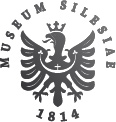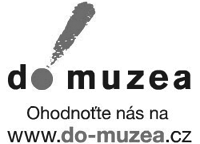ČASOPIS SZM SÉRIE B – VĚDY HISTORICKÉ
LXIV/3/2015
OBSAH/CONTENTS
STUDIE/STUDIES
Jiří KAREL – Marek KIECOŇ: Archeologický výzkum náměstí Míru a Radniční ulice v Rýmařově / Archaeological Research of Peace Square and Radniční Street in Rýmařov
(s.201–216)
Abstract
The article deals with rescue archaeological research carried out in the Peace Square and Radniční Street in
2013. Many situations characteristic of similar places were found during the reconstruction of the main public
area in the town centre, in particular paving, remains of a fountain and sewerage. The research was carried out
partly also in the area of the surrounding town plots, basements of Middle Ages wood-clay constructions as well
as basements of late modern times brick buildings were uncovered. Ceramic dishes are positively predominant
among the material finds, numerous are also metal items and fragments of scoria.
Keywords: Rýmařov, wood-clay construction, paving, fountain, sewerage, ceramic, metals
Ilona MATEJKO-PETERKA: Obraz społecznego i gospodarczego życia na śląsku w świetle medali i plakiet pochodzących z wystaw zorganizowanych w xix i w 1. połowie xx w. / Social and Economic Life in Silesia in the Light of Medals and Seals from Exhibitions Held in the 19th and 1st half of the 20th century
(s. 217–232)
Abstract
The article aims to analyse the medals and seals from economic-industrial exhibitions organised in the 19th and
1st half of the 20th century in the region of historic Austrian Silesia. They were held in many Silesian towns,
among others in Opava, Cieszyn, Jeseník, Krnov, Vidnava, Bielsko and Frýdek, in 1874–1937. Numismatic
material created in this context was often in the form of award or a souvenir reminding the event. The article
also deals with the circumstances during the organisation of these events which often helps to understand
various iconography found on the medals and seals.
Keywords: Silesia, Austrian Silesia, medal, numismatics, exhibitions, economy, associations
Libor MARTINEK: K literatuře na Těšínsku od osvícenství do první světové války / Literature of the Teschen Region from the Enlightenment till the World War I
(s.233–256)
Abstract
The article deals with period when the national awareness of Teschen Silesia residents crystalized, which influenced
also the literature. The article is a follow-up of the author's previous study presented in the Journal of
Silesian Museum in Opava Problems of Life and Work of Jan Karel and Jiří Karel Skop (Tluk) (2013, no. 1,
p. 49‒65), it completed the overview of the development of literature in the Teschen region up to the World War
I when we can talk about the end of national awakening process of the region's residents. This development is
studied on the background of problems of cultural identities. The work of Teschen writers reflects
the connection of socially-cultural activities, mainly the literary output, with the shaping of the Teschen Silesia
residents' identities.
Keywords: Teschen Silesia, literature, national awakening proces
Aleš KREMPL – Zdeněk JIRÁSEK: Osídlování okresu Krnov v letech 1945‒1949 / Settlement of Krnov District in 1945‒1949
(s. 257–270)
Abstract
The study deals briefly with the most important aspects of displacement of Germans and the settlement process
in Krnov region in 1945–1949. These processes are viewed as an inseparable part of one phenomenon which
significantly influenced the lives of many people. The most important part of the study is the settlement process
which is examined mainly through the regional archive sources with respect to internal settlement, reemigration
and repatriation. Thus the study tries to deal mainly with the regional specifics of the settlement
process in Krnov district.
Keywords: Krnov, Germans, displacement, settlement, borderland, re-emigration, repatriation, Silesia
Romana ROSOVÁ: Kostel Všech Svatých ve Vlčovicích v obraze písemných pramenů / All Saints church in Vlčovice in written sources
(s. 271–284)
Abstract
The All Saints Church in Vlčovice by Frenštát pod Radhoštěm used to be marginalised by researchers and the
authors of the existing works mostly thought of the church as Gothic. On the basis of written sources and comparison
with similar buildings in Moravia and Silesia we managed to prove that it is a Renaissance building
from the end of the 16th century established by Bishop of Olomouc Stanislas Pawlovski. It was built in the post-
Gothic style which was characteristic for Catholic (especially episcopal) buildings from the period of Reformation.
The church was nearly fully preserved only with small changes made in the 18th century up to the 70s of
the 19th century when it went through radical reconstruction connected with regotisation. These changes led to
the fact that the church had been considered a Middle Ages building for a long time.
Keywords: Renaissance, sacral architecture, Diocese of Olomouc, post-Gothic style, Vlčovice by Frenštát pod
Radhoštěm, Stanislas Pawlowski, Anton Kybast
Pavel ŠOPÁK: Muzea a památky, věda a technologie v první a druhé třetině 19. století na Moravě a ve Slezsku: Albin Heinrich (1785–1864) / Museums and historic sights, science and technology in the first and second third od the 19th century in Moravia and Silesia: Albin Heinrich (1785–1864)
(s. 285–296)
Abstract
The At the occasion of the 230th anniversary of birth of Albin Heinrich (1785–1864), the study reminds the contemporary
context of Heinrich's administrative activities in museums in Teschen and Brno, his literary work and
research interests in the area of material culture, history and natural science of Moravia and Austrian Silesia.
Keywords: Austrian Silesia, Moravia, Brno, Teschen, museums, Heinrich Albin, geognosy, historiography
RECENZE/REVIEWS
(s. 297–298)
Tomáš Skalík, Tiché dominanty veřejného prostoru. Opavské sochy 2, Opavská předměstí (Romana Rososvá), Irena Korbelářová, Zamilované strašidlo a milovaná šípková růže. Svatby na slezských knížecích dvorech v době raného baroka (Marcela Gavendová).
KRONIKA/CHRONICLE
(s. 298–300)
Hodonínský muzeologický seminář (Otakar Kirsch), Seminář se zámeckou tématikou (Jana Nevřelová).
Poslední aktualizace článku: 19.06.2020
Vytisknout celý článek







